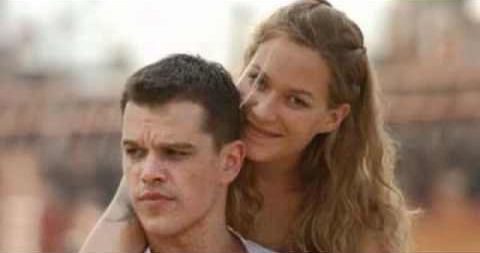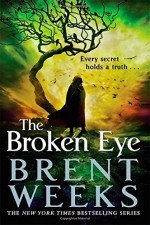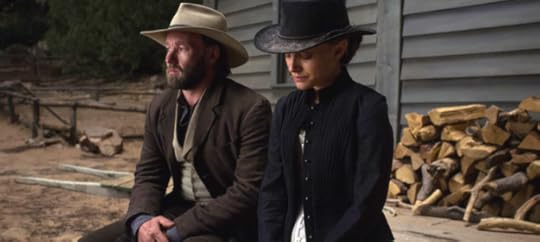The Only Reason Your Story Should Have Flashbacks
 Writers love their flashbacks. And with good reason. Flashbacks are a multi-functional technique for stepping outside your story’s timeline and sharing interesting and informative nuggets about your characters’ pasts. But just as they can be used to strengthen your story, they can even more easily cripple it.
Writers love their flashbacks. And with good reason. Flashbacks are a multi-functional technique for stepping outside your story’s timeline and sharing interesting and informative nuggets about your characters’ pasts. But just as they can be used to strengthen your story, they can even more easily cripple it.
First things first: what is a flashback?
A flashback is basically a memory. It can take several forms:
A character within the main story actively remembering something. (For example, amnesiac Jason Bourne regains snippets of memory and remember his girlfriend Marie in quick flashbacks.)

You can convey flashbacks as quick snippets of memory that do not slow the main narrative.
A omniscient narrator stepping back from the main conflict in order to recount something that previously happened to one of the characters. (For example, Markus Zusak’s World War II novel The Book Thief is essentially one long flashback—one long memory from its narrator Death.)

You can convey flashbacks as dramatized scenes, told from the perspective of a distant narrator.
A simply interjection of a scene from a previous timeline into the main story. (For example, Brent Weeks’s The Broken Eye includes several dramatized scenes from the protagonist Gavin Guile’s childhood.)

You can tell flashbacks as dramatized scenes interjected into the main narrative.
The flashback can be shared in one of three ways:
Briefly, in summary (or “telling“), in which the event’s pertinent details are referred to without dramatizing them. (For example: “Christmas Eve, two years ago. That’s when Ellie had received word of her daughter’s death.”)
Lengthily, in a fleshed-out, dramatized scene of its own, which recounts the memory blow for blow. (“The police officer had accidentally knocked the wreath off the door when he rang the doorbell. He looked far too apologetic when he held it out. ‘I’m sorry, ma’am…'”)
In dialogue, in which the character verbally shares the memory with another character. (“‘I don’t drive anymore,’ Ellie told Allen. ‘Or celebrate Christmas.'”)
All of these are legitimate approaches. But just because you can use them in your story doesn’t mean you should.
2 Qualifying Factors of Necessary Flashbacks
There are only two reasons you should ever include a flashback in your story. The first one is (or should be) pretty obvious…
1. The Character Has an Interesting Backstory
If nothing interesting happened to your character before the main story, well then… please don’t go out of your way to tell readers that, much less dramatize it for them.
2. The Backstory Moves the Plot
The second qualifier for necessary flashbacks is that your character’s interesting backstory not only matters to your main plot, but moves the plot.
But even that’s not enough. For a flashback to be worthwhile, it isn’t enough for its information to simply be important. Beyond that, the very act of the character’s remembering must be a plot catalyst.
When you screech your story to a halt just so your character can reminisce, you better be getting something big in exchange for the interruption to your narrative flow. You better be getting a plot revelation that jumps your conflict and your character’s arc into higher gear that ever before.
How Failed Flashbacks Cripple Your Story
Flashbacks were another area in which Gavin O’Connor’s besieged western Jane Got a Gun struggled. Fully half the story is made up of flashbacks that dramatize the erstwhile romance between Jane and her one-time fiancé Dan Frost, who has now reluctantly come to her and her dying husband’s aid.
This backstory is crucial to the entire story. Jane and Dan’s troubled relationship—and the reasons it initially failed—are at the heart of both the story’s inner and outer conflicts. You’d think, therefore, that flashbacks would be the perfect choice for this story. But not so.
Why?
3 Ways Your Flashbacks Might Be Taking More Than They’re Giving
Jane Got a Gun shows us three excellent reasons to reconsider employing flashbacks:
1. The Flashbacks Don’t Offer Enough New Info
Flashbacks—especially dramatized flashbacks—take up an inordinate amount of time and space. This signals to readers that the information they offer is important. What that means to you as the author is that you must weigh the plot-moving information your flashbacks are providing against the amount of space they require.
For Example: In Jane Got a Gun, the flashbacks take up nearly half the running time—and yet, they convey only one single solitary bit of new information (SPOILER That, unbeknownst to Dan, he had a daughter with Jane, who was supposedly murdered by the antagonist. /SPOILER)

Rule of thumb: don’t create flashbacks that are “bigger” than the amount of information they convey.
2. The Flashbacks Destroy Subtext
The bulk of your story’s subtext will be provided by your character’s backstories. The moment you bring that backstory into the clear light of dramatized narrative, it ceases to be subtext. It becomes obvious, blatant, even on-the-nose. It loses more than half its power. Sometimes this trade-off is acceptable (especially late in the story), but always ask yourself whether the fun of dramatizing the backstory is worth the subtlety and mystery you lose in the main story.
For Example: Jane and Dan’s relationship would have been far more powerful and intriguing had it not be outright explained to viewers through the unnecessary flashbacks. Especially when we realize this desire to explain was the only reason these flashbacks were included in the first place, it’s a shame the relationship couldn’t have been conveyed with more subtlety and drama.

Always ask yourself if the subtextual power you’re losing is worth the exchange of blatant flashbacks.
3. The Flashbacks Shift the Emphasis From Where It Belongs
Flashbacks are, by their very nature, a little obtrusive and blatant. The more lengthy a dramatized flashback, the more it will, in essence, jump up and down and shout, “Look at me!” This means it pulls emphasis away from what really matters: the main plot.
Except for those rare instances in which your backstory actually is more important that your character’s current struggles (in which case, you might want to consider why you aren’t writing the backstory saga instead), be wary of stopping your narrative, stuffing it with flashbacks, and losing the ability to focus emphasis where it counts.
For Example: Because Jane and Dan’s flashbacks took up so much space and explained away so many past hurts, their relationship in the main story ended up having little to do and little time in which to do it anyway. The main story was sacrificed to a needless exploration of a backstory that could have been revealed with more power and precision without the flashbacks.

Don’t let unnecessary flashbacks take over and rob the forward momentum from your story’s main conflict.
Consider your main narrative and your backstory. Nine times out of ten, flashbacks will not be the best choice for either. But if you find yourself wondering whether a flashback or two might be just the trick for your characters’ tale, stop and objectively examine whether this blatant exploration of backstory is more likely to add or take away from what you’re trying to accomplish.
Wordplayers, tell me your opinion! Have you used flashbacks in your work-in-progress? Why or why not? Tell me in the comments!
The post The Only Reason Your Story Should Have Flashbacks appeared first on Helping Writers Become Authors.



